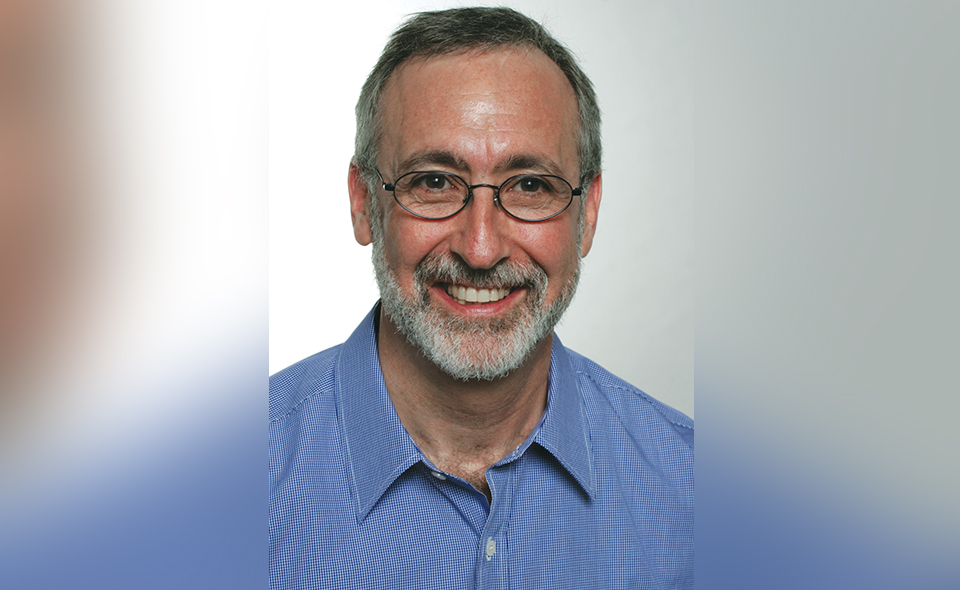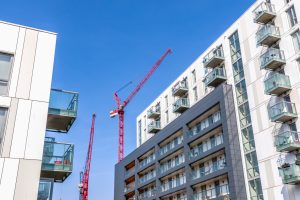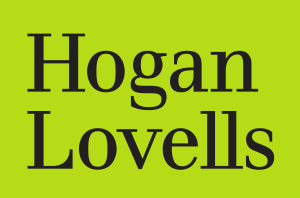In this article, we hear from veteran zoning law attorney Howard Goldman on the particularities of zoning law in NYC and the upcoming ‘City of Yes’ initiative, which promises to modernise crucial zoning regulations and promote a greener future.
With your extensive background in New York City land use and zoning law at GoldmanHarris LLC, you have a unique perspective on the city's development initiatives. Can you briefly share with our readers about your work and expertise?
I have been a land use attorney in New York City for 43 years as Deputy Counsel to the City Planning Commission, a partner in ‘big law’ firms, a solo practitioner and a co-founder of GoldmanHarris LLC. Before that, I worked as a lawyer in Alaska, where I was introduced to land use and environmental regulation in the North Slope Borough.
GoldmanHarris is a small (boutique) law firm specialising in zoning and land use in New York City’s five boroughs. Zoning is a key tool for regulating the use of real property and, in the world of real estate, one of the first questions asked by developers, buyers and lenders. New York is the densest municipality in the United States and was the first to adopt a comprehensive zoning ordinance. The original 1916 Zoning Resolution (about 100 pages) was replaced in 1961 and is now about 1,300 pages long.
My firm’s practice focuses on the Zoning Resolution and the land use review process. Land use practice requires a sophisticated understanding of the Zoning Resolution and related regulations, and the ability to work closely with clients and the City Planning Commission, Department of City Planning, City Council, Department of Buildings, Landmarks Preservation Commission and Board of Standards and Appeals. Our objective as land use lawyers is to help make projects happen, not to obstruct them.
The 'City of Yes' initiative is an ambitious plan aiming to streamline the city's land use and zoning process. From your experience, what are the key challenges that such an initiative would likely face?
The City of Yes is a remarkable and long-overdue development. Unlike prior initiatives, it seeks to amend the Zoning Resolution to address critical needs while streamlining the review and approval process. This is an unprecedented combination. The critical needs are to achieve carbon neutrality, increase affordable housing and spur economic growth. The streamlining aspect involves changes to how agencies process applications to produce faster and more predictable results.
Implementation of the initiative requires amendments to the Zoning Resolution and changes in agency procedures. Zoning amendments are subject to a public review and approval process mandated by the City Charter, involving referral to the affected community board(s) and borough president(s) and approval by the City Planning Commission and City Council, with public hearings held at each stage. Changes in agency procedures, primarily at the Department of Buildings and the Department of City Planning, may be made by the heads of these agencies without public review.
The City of Yes is a remarkable and long-overdue development.
The challenges faced by the proposed zoning amendments include the actual drafting of the amendments, which are complex and affect many different sections of the Zoning Resolution, and the public review process, including presentations, responses to comments and revisions. The amendments for affordable housing and economic growth are still being drafted while the amendments for carbon neutrality are in the public review process.
The basic challenge faced by changes in agency review procedures is overcoming decades of constructing elaborate processes that increase the time, costs and unpredictability associated with obtaining permits and approvals. The challenge is to make the land use and environmental processes faster, less costly and more predictable without compromising the public’s health, safety and welfare.
The initiative plans to make the city's land use review process more predictable and efficient. In your view, what legal obstacles might emerge when trying to implement these changes, and how could they be overcome?
Changes to the internal review procedures of the Department of Buildings, which issues permits and approvals for developments, and the Department of City Planning, which is the gatekeeper to the Zoning Resolution and public review process, are not subject to public review or approval. These changes can be implemented by the Commissioner of Buildings and the Director of the Department of City Planning.
Legal challenges to final agency actions may be brought in New York State Supreme Court under Article 78 of the Civil Practice Law and Rules. In this proceeding, challengers must prove that an agency has acted arbitrarily, capriciously or illegally. This is a difficult standard for challengers to meet and most agency determinations are upheld. However, challenges may delay a project that is premised on financing schedules and future market conditions. The defence to an Article 78 challenge is to demonstrate that the contested action meets a compelling public need, meets all legal requirements, is in accordance with a comprehensive plan and results from a sound planning process.
The plan also calls for modifications to Zoning Resolution and City Environmental Quality Review (CEQR). How significant are these proposed changes, and what legal issues might they raise?
The City has been reluctant to change the substance of environmental review because of a provision in the State Environmental Quality Review Act (SEQRA) that prohibits changes that are “less protective of the environment”. To its credit, the City of Yes recommends that the City adopt a more robust list of ‘Type II’ actions that are not subject to environmental review because they are unlikely to result in environmental impacts in New York City. Until now, the City has refrained from significantly expanding its Type II list due to concerns over the “less protective” prohibition, even though the Type II list mandated by the state is designed to apply equally to all local governments in New York State, from the smallest to the largest and from the most rural to the most urban.
How do you anticipate the proposed digitisation of the zoning and land use application process impacting the legal landscape around city?
It is critical to our democracy that government be open and transparent. Digitisation, which is already in progress, will facilitate public access to land use applications. In anticipation of increased public access, applications will need to clearly explain what is being proposed, why the action is necessary, and why it is appropriate from a planning and legal perspective. State law requires that discretionary land use actions be consistent with a “comprehensive plan”. While New York City does not have a document titled ‘Comprehensive Plan’, the Zoning Resolution is, in fact, the City’s comprehensive plan.
It is critical to our democracy that government be open and transparent.
Given the plan's emphasis on community engagement and partnerships, what legal frameworks might need to be established or strengthened to ensure this successful collaboration?
The Uniform Land Use Review Procedure, which was adopted in 1975, provides a framework for community engagement and partnership. It requires that applications for discretionary land use approvals first be determined to be complete by the Department of City Planning. After this occurs (which currently can take years), the application is ‘certified’ as complete by the City Planning Commission and referred to the affected Community Board and Borough President for public hearings and non-binding (but politically significant) recommendations.
The City Planning Commission then holds a public hearing, votes, and issues a detailed report explaining its decision. If the Commission does not approve, the application dies. If the Commission approves, the application is forwarded to the City Council, which holds more public hearings and renders a decision to approve, modify, or disapprove the City Planning Commission decision. The process has worked reasonably well over the past 48 years.
Can you share a case from your professional experience that illustrates the kind of legal challenges that the City of Yes initiative may encounter?
The 1982 Midtown Rezoning was adopted when I was the Deputy Counsel at the Department of City Planning. My job was to coordinate the environmental review process. The Midtown Rezoning was an ambitious plan to amend the Zoning Resolution to encourage commercial development west of Sixth Avenue while cooling off development to the east. The certification of the application was preceded by two years of planning, reports and public outreach by the Department of City Planning. There was only one legal challenge to the rezoning, which involved the effects on two sites east of Sixth Avenue that were downzoned while they were in construction. A court challenge by the developers based on SEQRA was dismissed.
Lastly, looking at the long-term impact, how might 'City of Yes' reshape the legal and regulatory landscape of urban development in NYC?
It is my hope that the City of Yes will reverse the perception of New York City as hostile to development because of time, costs and uncertainty. The City of Yes also needs to reverse the reality that New York is extremely expensive to live in by increasing the development of affordable housing. As new urban challenges arise in the future, as they surely will, the City of Yes can provide a model for addressing these challenges. Mayor Eric Adams and City Planning Commission Chair Dan Garodnick, in particular, should be commended for their work on the City of Yes.
Howard Goldman, Co-Founder
475 Park Avenue South, New York, NY 10016, USA
Tel: +1 212-935-1622
Howard Goldman is the co-founding partner of GoldmanHarris LLC and has been practicing land use law in New York City since his appointment as Deputy Counsel to the Department of City Planning in 1980. He has since worked as a land use partner at two leading law firms before opening his own firm in 1999, with GoldmanHarris LLC opening in 2008. Howard is also an adjunct professor at New York Law School, an author of numerous articles, and has been recognised by Chambers and Partners in Real Estate: Zoning/Land Use (New York) for his expertise.
GoldmanHarris LLC is a boutique law firm focusing on zoning and land use in the five boroughs of New York City. The firm’s team are all veterans of NYC’s development process, and its senior partners have almost eight combined decades of experience in NYC land use between them.





















